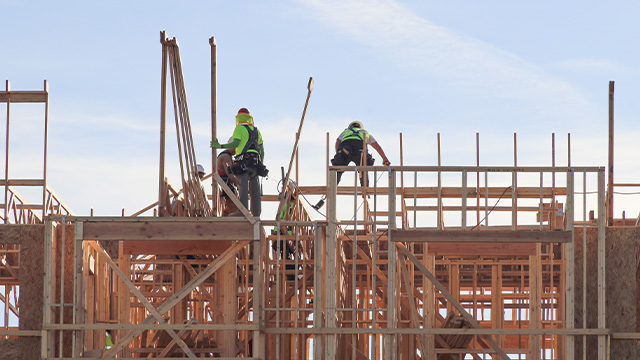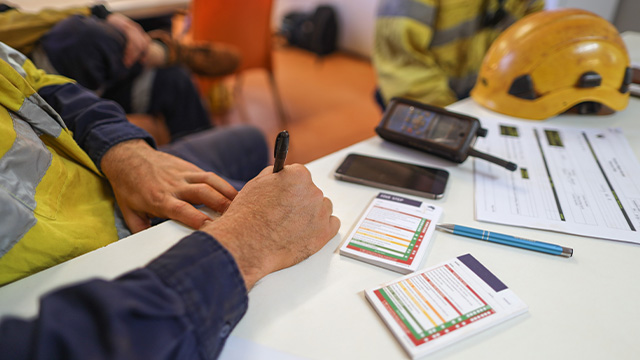The importance of effective safety management cannot be overstated in the business world, particularly in industries where risks are ever-present. The right documentation not only ensures compliance with regulations but also plays a critical role in safeguarding the health and well-being of employees.
Understanding and implementing the top 10 safety management documents can be crucial for businesses of all sizes. Let’s delve deeper into each of these essential documents.
1. Safe Work Method Statements for High-Risk Construction Work
A Safe Work Method Statement (SWMS) is indispensable in high-risk construction work. It is a comprehensive document that outlines the methods of safely conducting specific tasks. The SWMS helps identify potential hazards and implement effective control measures, ensuring high-risk activities are carried out with the utmost safety. It’s a dynamic document, often revised to adapt to changing work conditions or new safety regulations, making it a living part of your safety process.
Discover how our SWMS templates can guide you.

2. Comprehensive Risk Assessment Forms
Risk Assessment Forms are vital for understanding and managing the risks associated with various workplace activities. These documents help in proactively identifying potential hazards, assessing the likelihood and impact of these hazards, and determining the best ways to mitigate them. A thorough risk assessment is the first step in creating a safe work environment, and these forms provide a structured approach to this critical process.
Check out our structured Risk Assessment Forms.
3. Detailed Safety Management Systems
A Safety Management System is a cornerstone document that lays the foundation for a company’s approach to health and safety. This comprehensive guide covers everything from organisational structures, accountabilities, policies, and procedures. It’s a go-to resource for understanding a company’s safety philosophy and practices, providing a clear path to creating a culture of safety.
Explore our comprehensive Safety Management Systems.
4. Job Safety Analysis for Specific Tasks
Job Safety Analysis (JSAs) are focused documents that dissect specific job tasks to identify potential risks. These analyses play a key role in developing safe work procedures and ensuring that employees are well-informed about the hazards associated with their jobs. By breaking down tasks, JSAs help pinpoint risks and formulate targeted strategies to mitigate them.

5. Policies and Procedures for Workplace Safety
Workplace safety policies and procedures are essential for establishing clear guidelines and expectations. These documents provide a framework for safe practices and behaviours, ensuring employees understand their roles and responsibilities in maintaining a safe work environment. They serve as a benchmark for safety performance and a reference point for continuous improvement.
View our Policies and Procedures templates.
6. Safety Checklists for Inspections and Audits
Safety Checklists are practical tools used during inspections and audits to identify potential hazards. Tailored to specific work environments, these checklists ensure that workplace safety is scrutinised and compliance with safety standards is maintained. Safety checklists are a proactive way to prevent workplace accidents and injuries.
Access our tailored Safety Checklists.
7. Worker/Contractor Handbooks for Site-Specific Induction
Worker and Contractor Handbooks are essential for onboarding and educating employees about site-specific safety rules and procedures. These handbooks serve as a comprehensive guide, ensuring that everyone on site knows the potential risks and that safety controls are in place.
Explore our comprehensive contractor handbooks.

8. Site-Specific Management Plans for Tailored Safety Strategies
Site-specific management Plans are customised to address a particular site's unique challenges and safety requirements. They outline responsibilities, timelines, and specific safety procedures, ensuring that the management of safety risks is as precise and effective as possible.
Discover our Safety Management Plans.
9. Safe Operating Procedures for Consistent Safety Practices
Safe Operating Procedures (SOPs) ensure tasks are performed safely and consistently. They provide step-by-step instructions, helping employees avoid safety risks and perform their duties efficiently while adhering to established safety guidelines.
10. Risk Registers for Centralised Risk Management
Risk Registers are essential in maintaining a centralised record of all identified risks, their severity, and the actions taken to manage them. This organised approach enhances visibility and accountability, ensuring that risks are not overlooked and are managed proactively.
Explore our Risk Register templates to streamline your risk management process.
In today’s business environment, prioritising workplace safety is not just a regulatory requirement but also a moral imperative. SafetyDocs by SafetyCulture offers a comprehensive suite of documents to help you navigate the complexities of workplace safety.
From detailed method statements and risk assessments to practical checklists and procedures, our resources are designed for ease of use and effectiveness. By partnering with us, you can confidently create a safer workplace, ensuring compliance and peace of mind.
Explore our range of safety management documents and take the first step towards a safer future.
Author - Craig Cruickshank is the HSEQ Manager and Senior Technical Advisor at SafetyDocs by SafetyCulture.
Craig comes from a construction and environmental background, with experience in both the private and public sectors and is passionate about making health and safety information easy to find and understand for everyone.
Learn more about Craig's work on LinkedIn
Available for instant download and supplied in fully editable MS Word format for use in your business.
Please note that the above information is provided as a comment only and should not be relied on as professional, legal or financial advice.
Share This Article
